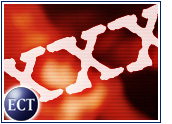
Smut distributed through peer-to-peer networks isn’t inherently more dangerous than titillating matter found elsewhere on the Internet.
That was one of several findings by the research arm of the U.S. Congress, the General Accounting Office (GAO), in a letter responding to written inquiries by the Senate Judiciary Committee following the panel’s hearings in September on P2P technology.
“The pornography available on peer-to-peer networks is not necessarily more dangerous than the pornography available on Web sites or through other electronic means of dissemination,” the GAO wrote in the letter to committee chairman Orrin G. Hatch (R-Utah).
Not So Anonymous
The GAO’s comment came in response to the committee’s query, “Is there something particularly dangerous about the pornography on peer-to-peer networks, whether in the user’s ability to share it anonymously or in its accessibility to children?”
“Although some users of peer-to-peer networks might believe that they are sharing files anonymously, it is possible for law enforcement officials to discover identities of individuals sharing child pornography and other illegal material on peer-to-peer networks,” the GAO wrote in its letter, a copy of which was obtained by TechNewsWorld.
The agency went on to say: “With peer-to-peer networks, pornography is easily accessible to children and the risk of inadvertent exposure to pornography is significant. However, pornography is also easily accessible through other electronic means, such as Web sites, and the risk of children’s inadvertent exposure to pornography exists on these other mediums as well.”
Red Herring
According to Adam Eisgrau, executive director of P2P United, a Washington, D.C., organization that represents a group of peer-to-peer providers, the pornography issue has been used by the recording industry as a “red herring” to make P2P networks a target for Congressional action.
“The GAO absolutely documents that the problem of the exposure of children to child pornography is an Internet-driven problem overall,” he noted. “The material is not only just as available over the Internet in general; it’s vastly more available over the Internet in general.”
The agency noted that it would be difficult for operators of P2P networks to prevent the introduction of child pornography on their systems. “Unlike traditional Web sites, which have centralized content management, users control the content that is available on peer-to-peer networks, and the users of the network are constantly in flux,” the GAO said.
Terrorist Cells
Moreover, as Jarad Carleton, an IT industry analyst with Frost & Sullivan in San Francisco pointed out, some P2P developers, such as the Freenet Project, are creating networks whose sole purpose is to preserve their users’ anonymity. According to a Frost & Sullivan report published earlier this year, Freenet protects anonymity by making data “placeless.”
The report noted: “The concept of placeless data is handled in the Freenet platform by creating a cell structure, similar to terrorist cell structures that have been designed to protect a person’s anonymity. Therefore, any node that participates in retrieving a piece of information, only knows where it got the request from and where it sent the request to. It doesn’t know where the request originated nor can it determine which node answers the request.”
The Judiciary panel also asked the GAO if the volume of child pornography on peer-to-peer networks is underreported. Although unable to address the question directly, the GAO observed that peer-to-peer networks accounted for only about 1.4 percent of the more than 62,000 reports of Internet-related child porn collected this year by the National Center for Missing and Exploited Children (NCMEC).
Law of Diminished Control
“However,” the GAO cautioned, “we do not know if the number of reports received by NCMEC accurately reflects the volume of child pornography on peer-to-peer networks or on the Internet in general, since the reports are based on tips that the public or system users submit rather than a systematic analysis of network content.”
The GAO also indicated that tracking the users of P2P systems, which is seen as an important step in protecting copyrighted material like music, is challenging, especially in the decentralized systems that have emerged since the demise of the original Napster. “In the decentralized model, in which individuals find and interact directly with each other, the ability of peer-to-peer software vendors to track individuals who use their software is greatly diminished,” the GAO said.
But the music industry isn’t buying the “law of diminished control” argument. “If peer-to-peer networks want to be legitimate players in the music community, the down payment is to filter copyrighted works, which we know they can and should do; warn users of their liability; and change the default settings so they do not induce their customers into participating in illegal activity,” according to the RIAA.






















































I believe the peer to peer networks SHOULD at LEAST let you know what is or is not copywrited material. I dont know anyone who has been able to tell one way or the other! Don